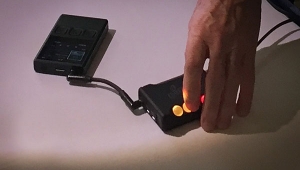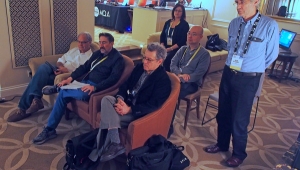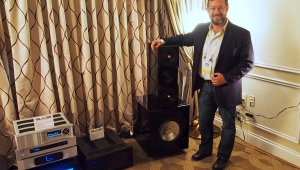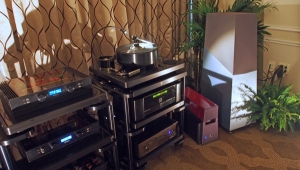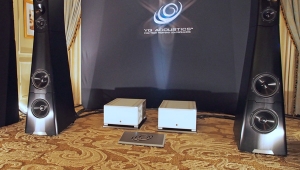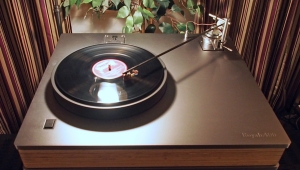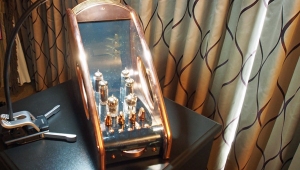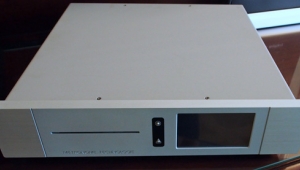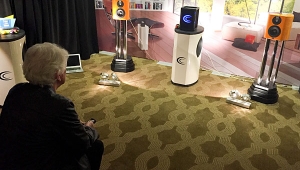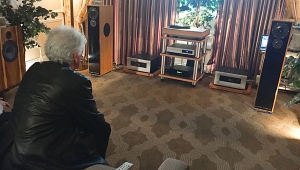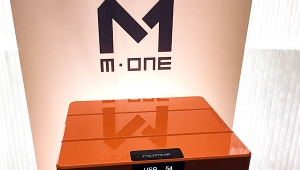| Columns Retired Columns & Blogs |
Viola Labs and Ocean Way Audio
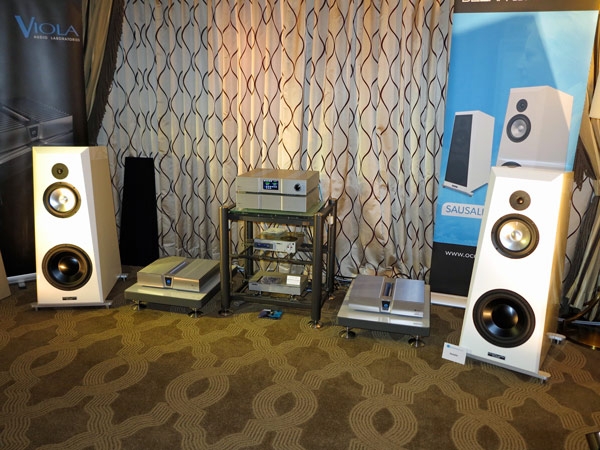
I hadn't even reached the listening area when five-time Grammy Award-winning engineer Allen Sides declared, "I have something symphonic-like that I think you'd like to hear." Not knowing the identity of this tall, skinny, kinetically-inclined person who kept staring at his iPhone while walking in circles like a dog chasing its tail—he's also the owner of Ocean Way Audio and Ocean Way Recording Studios, and the force whose ears guide Ocean Way's speaker design engineers—I thought to myself, "Oy, more second-rate film score music masquerading as art."
Other than noting that the music was colorful but a bit flat-sounding, I was mostly aware that Sides was moving so much that I needed to close my eyes in order to focus. Which means that I didn't pay much attention to the efforts of Academy Award-winning composer and orchestrator Kevin Kaska, and really owe this set-up another listen. (Note that among Kaska's voluminous credits is his work with the Bose Corporation "to demonstrate the quality of the company's loudspeakers.")
But this is not about Kaska. The truth is, we lamentably and most apologetically overlooked the launch of the Burbank-made Ocean Way Sausalito loudspeaker ($31,500/pair) last year. The speaker's face is angled at 10° for time alignment, and the cabinet has an 18-coat polyester finish as well as optional outrigger stands. The speaker is designed to allow the listen to move around the room without loss of imaging. Its 1" silk-dome HF driver is encased in ferrofluid to increase its power handling capacity while damping dome resonance. The 8" midrange unit has a reinforced aluminum cone with a vented, cast-aluminum chassis, and the 12" aluminum-cone woofer is designed to extend pretty far down. Frequency response is 28Hzצ24kHz ±3dB, and sensitivity 85dB/W/m.
Viola Labs, in turn, showed its new touchscreen Sonata preamp ($35,000), whose outboard power supply has separate regulated sections for analog circuitry and digital control. Volume and balance are controlled optically via a magnetic indexing application, and remote control is achieved via iOS application or RS-232. According to the company's literature, "the Sonata is based on the topology of the Crescendo preamplifier, and uses the OPA-1 discrete low-noise, high-speed operational amplifier module. The OPA-1 high-current output stage will drive high capacitance cables and power amplifier input stages."
- Log in or register to post comments

